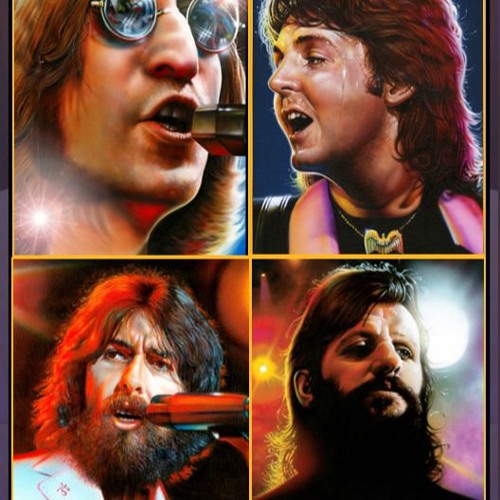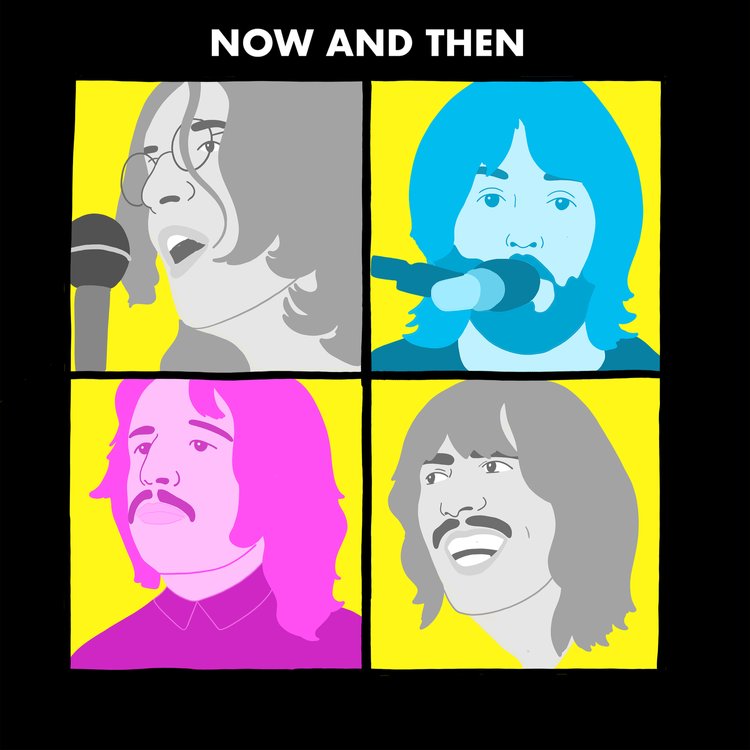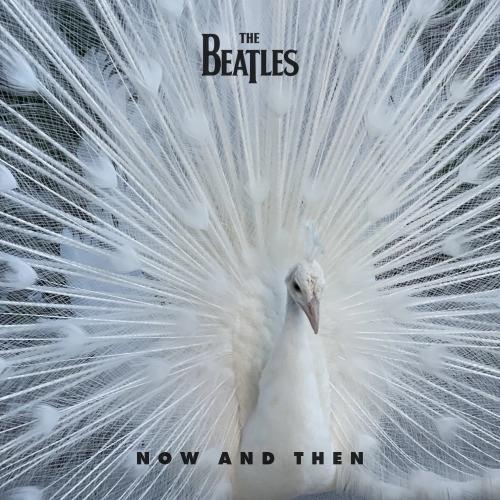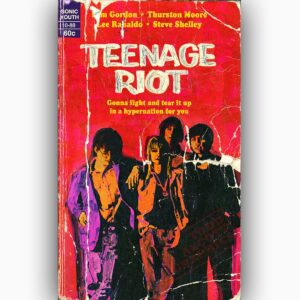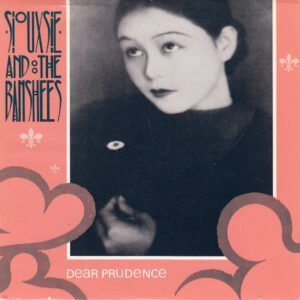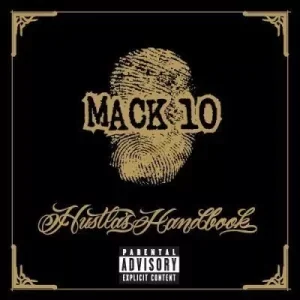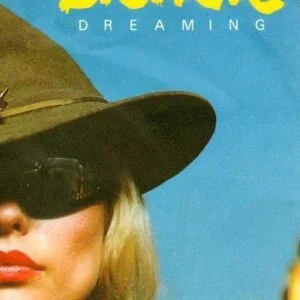The Beatles – Now and Then
Description
“Now and Then” is a song by the English rock band the Beatles, released on 2 November 2023. Dubbed “the last Beatles song”, it appeared on a double A-side single, paired with a new stereo remix of the band’s first single, “Love Me Do” (1962), with the two serving as “bookends” to the band’s history. Both songs were included on the expanded re-issues of the 1973 compilations 1962–1966 and 1967–1970, released on 10 November 2023.
“Now and Then” is a psychedelic soft rock ballad that John Lennon wrote and recorded around 1977 as a solo home demo but left unfinished. After Lennon’s death in 1980, the song was considered as a potential third Beatles reunion single for their 1995–1996 retrospective project The Beatles Anthology, following “Free as a Bird” and “Real Love“, both based on two other Lennon demos of the same name. Instead, it was shelved for nearly three decades, until it was completed by his surviving bandmates Paul McCartney and Ringo Starr, using overdubs and guitar tracks by George Harrison (who died in 2001) from the abandoned 1995 sessions.
The final version features additional lyrics by McCartney. Lennon’s voice was extracted from the demo using the machine-learning-assisted audio restoration technology commissioned by Peter Jackson for his 2021 documentary The Beatles: Get Back. Jackson also directed the music video for “Now and Then”. The song received acclaim from critics, who felt it was a worthy finale for the Beatles. It topped the charts in the United Kingdom, Germany, and Austria, and reached the top ten in Australia, Belgium, Canada, Ireland, the Netherlands, Sweden, Switzerland, and the United States. It is the only Beatles UK number-one single not attributed to the Lennon–McCartney songwriting partnership.
Composition and history
John Lennon wrote “Now and Then” in the late 1970s, and recorded a five-minute piano demo in around 1977 on a tape recorder at his home at the Dakota in New York City. The lyrics are typical of the apologetic love songs that Lennon wrote in the latter half of his career. For the most part the verses are nearly complete, though there are still a few lines that Lennon did not flesh out on the demo tape performance. Writing for the Los Angeles Times, Stephen Thomas Erlewine called Lennon’s composition “a wispy, melancholy ballad”, while Billboard‘s Kyle Denis described the song as “a lovelorn guitar-centric rock ballad”.
Referring to the original demo, Craig Jenkins of Vulture said “‘Now and Then’ languished in an unfinished state, its vocal and piano melodies enshrouded in too dense a thicket of abrasively scratchy hiss to massage into the high-quality recordings the Beatles were known for”.
Beatles’ first version with Harrison
In January 1994, the year Lennon was posthumously inducted into the Rock and Roll Hall of Fame, his widow, Yoko Ono, gave Paul McCartney two cassette tapes she had previously mentioned to George Harrison. The tapes, which both had a note on them reading “For Paul”, included home recordings of songs that Lennon had never completed and/or released commercially, two of them on one tape being the eventually completed and released “Free as a Bird” and “Real Love“. The two other songs on the other tape were “Grow Old with Me” and “Now and Then”. “Grow Old with Me” had already been released in 1984 on the posthumous album Milk and Honey, so the Beatles turned their attention to “Now and Then”. In March 1995, the three surviving Beatles began to work on it by recording a rough backing track that was to be used as an overdub. It included acoustic guitars played by McCartney and Harrison, a rough drum track by Ringo Starr, an electric guitar by Harrison, and a bass and “a few synth [things]” played by McCartney.” However, after several days of recording, all work on the song ceased and plans for a third reunion single were scrapped.
Producer Jeff Lynne reported that sessions for “Now and Then” actually consisted only of “one day – one afternoon, really – messing with it. The song had a chorus but is almost totally lacking in verses. We did the backing track, a rough go that we really didn’t finish”. Additional factors behind scrapping the song were that the piano Lennon was playing on during his demo recording was noisy, which kept drowning out Lennon’s vocals, as well as a technical defect in the original recording. As with “Real Love”, a 60-Hz mains hum can be heard throughout the demo recording. However, it was noticeably louder on “Now and Then”, making it considerably more difficult to remove.
The project was largely shelved because of Harrison’s dislike of the song due to its low-quality recording. McCartney later stated that Harrison called Lennon’s demo recording “fucking rubbish”. McCartney told Q magazine in 1997 that “George didn’t like it. The Beatles being a democracy, we didn’t do it.” Some such as Ben Lindbergh of The Ringer later speculated that, given Harrison had said “Apart from the quality, which was worse than the other two [‘Free as a Bird’ and ‘Real Love’], I didn’t think [‘Now and Then’] was much of a song”, he might have been critical of the song itself and not merely the recording quality. When the Beatles released their version of the song in 2023, Harrison’s widow Olivia issued a press release stating: “George felt the technical issues with the demo were insurmountable and concluded that it was not possible to finish the track to a high enough standard. If he were here today, Dhani and I know he would have wholeheartedly joined Paul and Ringo in completing the recording of ‘Now and Then.'”
Period of limbo (1996–2021)
Throughout 2005 and 2006, press reports speculated that McCartney and Starr would release a complete version of the song in the future. Reports circulated in 2007 that McCartney was hoping to complete the song as a “Lennon–McCartney composition” by writing new verses, utilizing archival recordings of backing vocals and guitar work from Harrison (who had died in 2001), and laying down a new drum track recorded by Starr.
Prior to the 2023 release, the only available recording of the song was from Lennon’s original demo. In February 2009, the same version of Lennon’s recording was released on a bootleg CD, taken from a different source, with none of the “buzz” which hampered the Beatles’ recording of the song in 1995.
During a Lynne documentary shown on BBC Four in 2012, McCartney stated about the song: “And there was another one that we started working on, but George went off it… that one’s still lingering around, so I’m going to nick in with Jeff and do it. Finish it, one of these days.” McCartney said in October 2021 that he still hoped to finish the track.
MAL restoration and final version
For the 2021 documentary series The Beatles: Get Back, director Peter Jackson‘s production company WingNut Films isolated instruments, vocals, and individual conversations utilising its audio restoration technology over a four year period. The neural network, called MAL (machine-assisted learning) – named after the Beatles’ former road manager Mal Evans, and as a pun to HAL 9000 of 2001: A Space Odyssey – was also later used for the 2022 remix of the 1966 album Revolver, based directly on four-track master tapes. WingNut applied the same technique to Lennon’s home recording of “Now and Then”, while preserving the clarity of his vocal performance separated from the piano. The studio worked on a digital copy of the original tape provided by Sean Lennon, which was of much better quality than the third-generation copy that the three surviving Beatles had used in 1995. Lennon’s vocals were isolated from his solo piano demo, which allowed the song to finally be finished. McCartney recorded bass guitar, a slide guitar solo in the style of Harrison as a tribute to him, electric harpsichord, backing vocals, and piano in the style of Lennon’s demo in his home studio in East Sussex while Starr later recorded a finalized drum track and backing vocals in his home studio in Los Angeles. Additionally, Harrison’s guitar parts (both acoustic and electric) from the 1995 sessions were inserted into the song.

The restoration was followed by the addition of a string section written by McCartney, Giles Martin (the son of Beatles’ former producer and longtime collaborator George Martin), and Ben Foster, recorded at Capitol Studios. The piece was given the decoy name of “Give & Take” to avoid leaks from the musicians and recorded during late April 2022. Finally, McCartney and Martin added portions of original vocal recordings of “Here, There and Everywhere“, “Eleanor Rigby” (both from Revolver), and “Because” (from the 1969 album Abbey Road) into the new song, following the methods used for the 2006 remix album Love. Ben Lindbergh of The Ringer contrasted the original recording to the released version: “McCartney collaborates with his former muse not just by building on Lennon’s work, but by undoing it. The Beatles release is almost a minute shorter than the Lennon demo, largely because the latter includes two pre-chorus bridges that the former removes (aside from a subtle, hard-to-hear allusion in McCartney’s piano chords during the new solo)”. Speaking about the removal of the pre-chorus bridge, McCartney said “It had a big middle section and I thought it rambled a bit. I thought to myself, Well, if I was working with John now … I’d say, ‘We’ve got to do something about that middle and maybe even remove it. I think it’ll make the song stronger.’ So we did. I think he would have been OK with that. Of course I’m never going to know but, y’know, I think mine’s the best guess we can have.” The finished track was produced by McCartney and Martin, while Lynne was credited for “additional production”, and mixed by Spike Stent. Meanwhile, the stereo and Dolby Atmos mixes, alongside the vinyl mastering, were completed at Abbey Road Studios.
On 13 June 2023, McCartney told BBC Radio 4‘s Today programme that he had “just finished” work on extracting Lennon’s voice from an old demo of the latter’s in order to complete the song, using (in his words) artificial intelligence. Dubbing the project “the final Beatles record”, he did not name the song; however, BBC News reported it was likely that the song is “Now and Then” and that it would be released later in 2023. On the use of AI for sound source separation, McCartney clarified in June 2023 that “nothing has been artificially or synthetically created. It’s all real and we all play on it. We cleaned up some existing recordings – a process which has gone on for years.”


